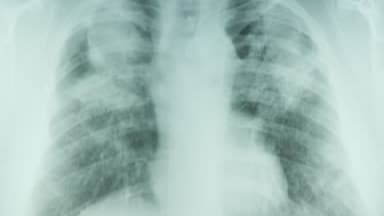Key points
- The pneumoconioses are a group of lung diseases caused by the lung’s reaction when breathing in certain dusts.
- The main cause of the pneumoconioses is workplace exposure.
- All forms of pneumoconioses can be severe.

Overview

The primary pneumoconioses are:
- Abestosis – caused by inhaling asbestos fibers
- Silicosis – caused by inhaling silica dust
- Coal workers' pneumoconiosis (commonly referred to as CWP or black lung) caused by inhaling coal mine dust
There is also a form called mixed-dust pneumoconiosis. Byssinosis, caused by exposure to cotton dust, is sometimes included with pneumoconioses. Although the pattern of lung abnormality in Byssinosis is different from the types of disease listed above. Also, many consider the term pneumoconosis as referring only to diseases caused by inhaling mineral dusts.
Pneumoconiosis typically takes years to develop. However, rapidly progressive forms of silicosis can occur after short periods of intense exposure. When severe, the diseases often lead to lung impairment, disability, and premature death. Pneumoconioses can be avoided through appropriate dust control.
Other forms of pneumoconiosis can be caused by inhaling dusts containing:
- Aluminum
- Antimony
- Barium
- Graphite
- Iron
- Kaolin
- Mica
- Talc
Symptoms
Pneumoconiosis symptoms depend on how severe the disease is. They include:
- Shortness of breath
- Coughing
- Increased phlegm
Diagnosis
Identifying and Classifying Pneumoconioses

The pneumoconioses are typically detected through radiological imaging. Severity of lung impairment can be assessed using pulmonary function tests. The International Labor Office (ILO) provides guidelines for classifying radiographs of the pneumoconioses.
NIOSH operates the B Reader Program. This program allows physicians to document their proficiency in classifying radiographs (using ILO guidelines) by taking an examination.
Treatment
Pneumoconiosis cannot be cured. Controlling symptoms through proper treatment is vital. Workers should avoid exposure to dust and smoking. Treatment may include oxygen or medications that help to open lung passages. Workers should see a doctor if they have symptoms they suspect are related to their workplace.
Resources
NIOSHTIC-2 is a searchable bibliographic database of occupational safety and health publications, documents, grant reports, and other communication products. Search "pneumoconiosis" for publications related to this disease.
